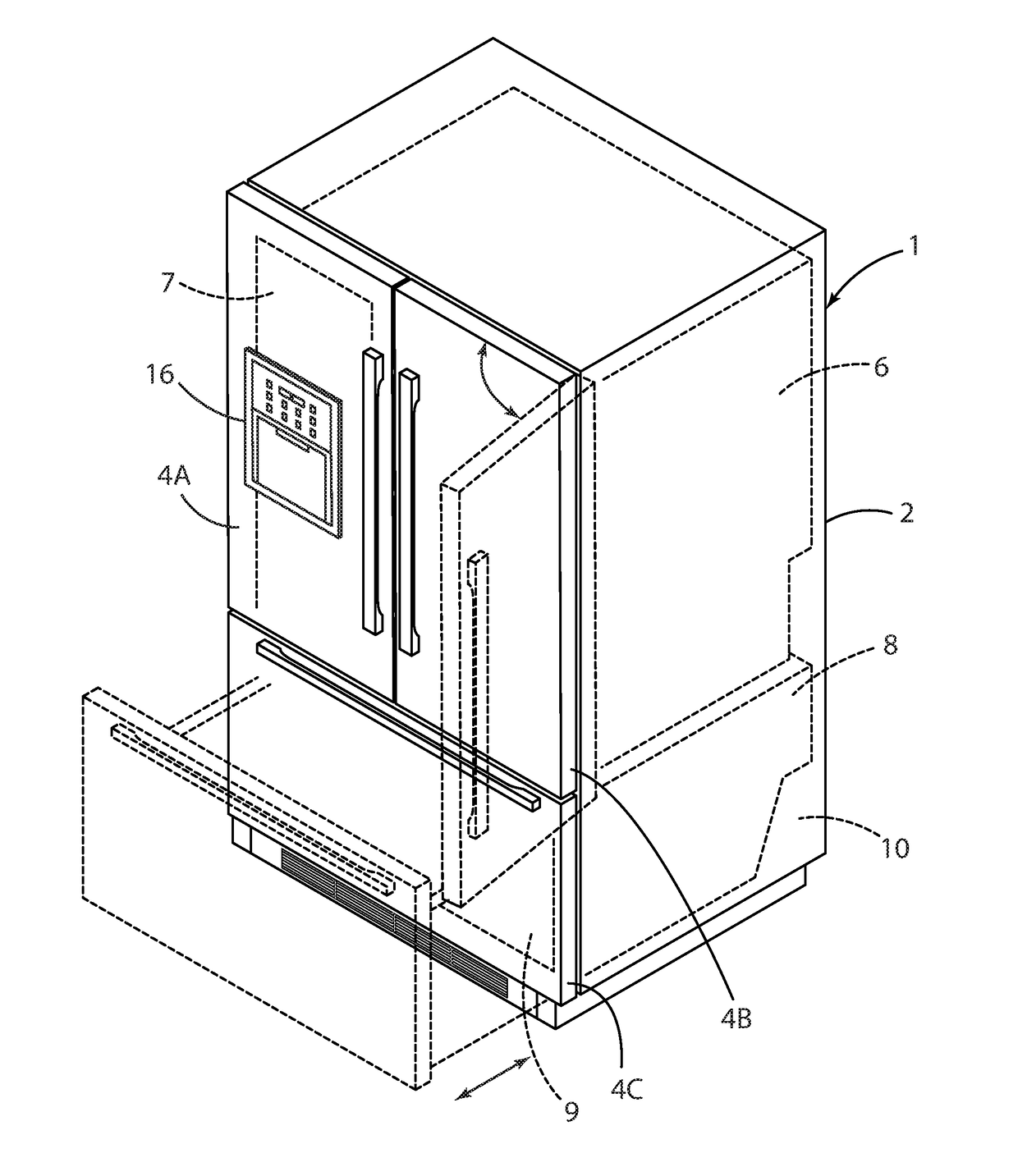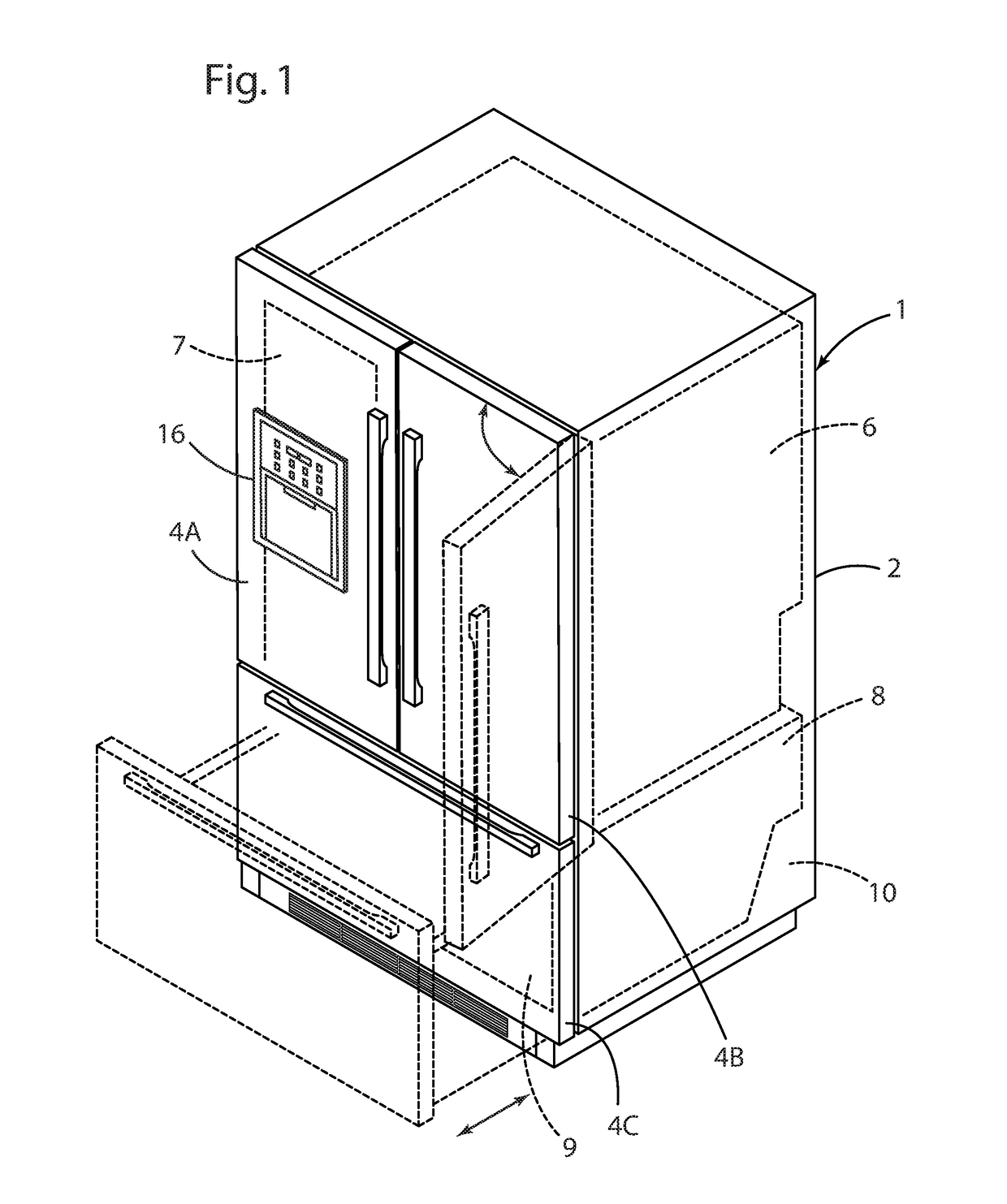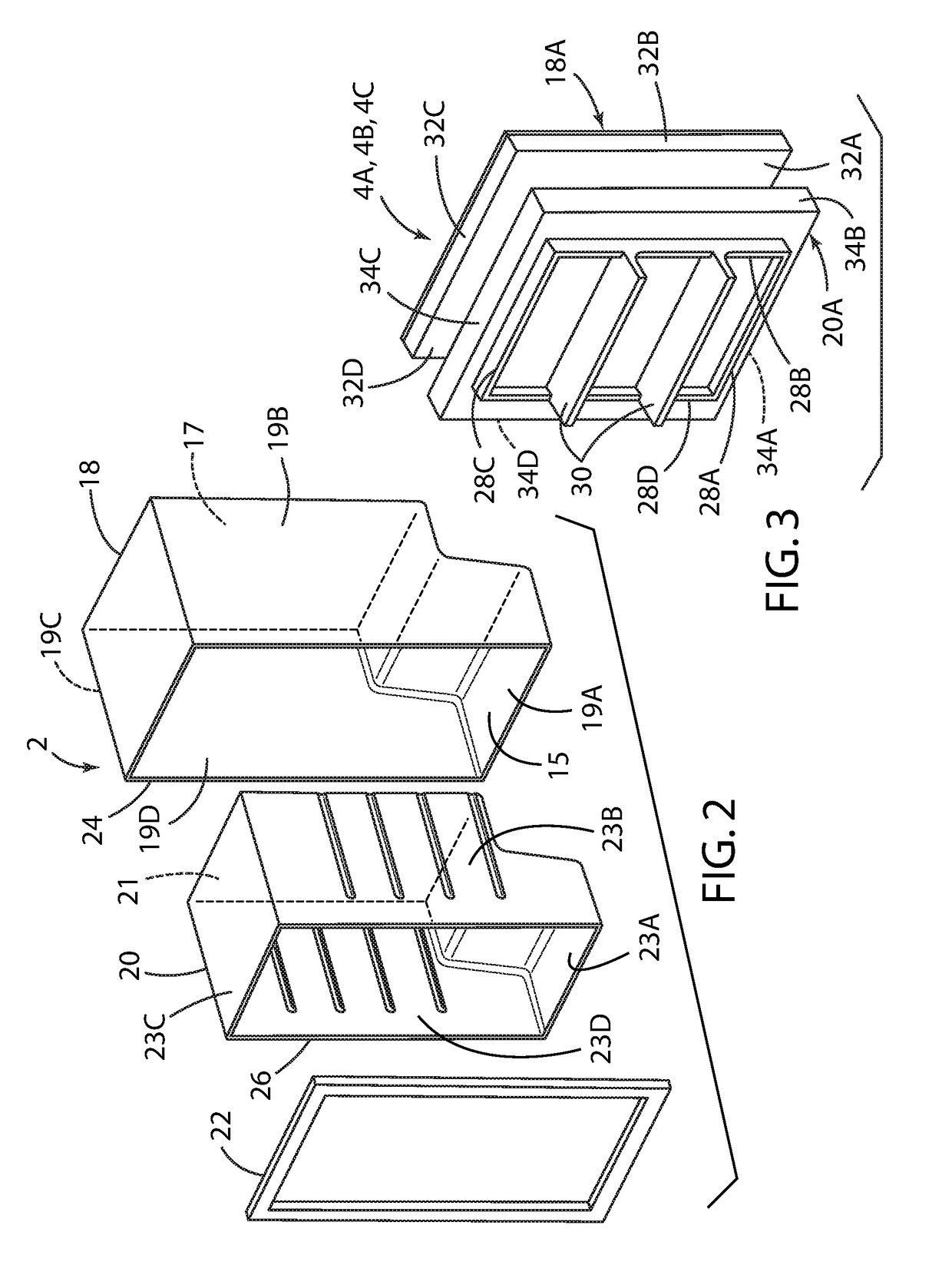Multi-layer gas barrier materials for vacuum insulated structure
a technology of gas barrier materials and vacuum insulation, which is applied in the direction of insulation for cooling apparatuses, domestic cooling apparatus, lighting and heating apparatus, etc., can solve the problems that the vacuum insulation structure known and the process for fabricating such structures may suffer from various drawbacks
- Summary
- Abstract
- Description
- Claims
- Application Information
AI Technical Summary
Benefits of technology
Problems solved by technology
Method used
Image
Examples
example 1
/ HDPE / HIPS
Example 2: HIPS / EVOH / COP / HIPS
example 3
/ COC / HIPS
Example 4: HIPS / EVOH / THWHIPS
example 5
/ PCTFE / HIPS
[0023]Layers 72, 74, 76, 78 and 80 are coextruded or laminated together to form a single sheet of material prior to thermoforming.
[0024]With further reference to FIGS. 7 and 8, multi-layer sheets 60 and 70 may be thermoformed utilizing male and female mold parts 86 and 88, respectively. Sheet 60 or 70 is initially positioned between mold parts 86 and 88 as shown in FIG. 7, and the sheet 60 or 70 is heated to temperature at which the sheet 60 or 70 can be plastically deformed by pressing the mold parts together as shown in FIG. 8 to form a wrapper, liner, or other such component. As used herein, the term “thermoforming” and variations thereof broadly means a forming process in which a sheet of thermoplastic polymer material is heated and formed, and “thermoforming” is not limited to the specific process / tools shown in FIGS. 7 and 8. For example, components may be thermoformed utilizing a vacuum forming process whereby a vacuum is utilized to deform sheet 60 or 70 to fit cl...
PUM
 Login to View More
Login to View More Abstract
Description
Claims
Application Information
 Login to View More
Login to View More - R&D
- Intellectual Property
- Life Sciences
- Materials
- Tech Scout
- Unparalleled Data Quality
- Higher Quality Content
- 60% Fewer Hallucinations
Browse by: Latest US Patents, China's latest patents, Technical Efficacy Thesaurus, Application Domain, Technology Topic, Popular Technical Reports.
© 2025 PatSnap. All rights reserved.Legal|Privacy policy|Modern Slavery Act Transparency Statement|Sitemap|About US| Contact US: help@patsnap.com



